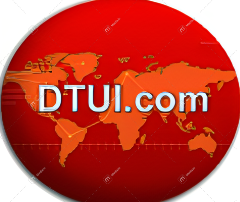Designing & Developing a Bias & Inequity Elimination Action Plan
The purpose of this course is to provide participants with a framework for transforming an organization into an equitable, inclusive and just workplace

DTUI.com
Course Overview
- Instructor: TBD
- Length: 10 Modules
- Office hours: Monday – Friday (9:00 a.m. – 5:30 p.m. (Pacific Time)
- Grade: Pass/Fail (78%)
- Course Access: 365 days/ 24 hours per day/ 7 days a week
- Format: Online
- Contact: (415) 692-0121 (Business Office); admin@dtui.com
- To provide at least examples of how institutional racism has impacted organizations and marginalized communities.
- To develop an understanding of the need for an action plan to eliminate racism inequities in organizations.
- To develop an understanding of how to identify inequities and barriers to equity.
- To develop an action plan designed to foster greater DE&I effectiveness across organizational planning, programming, training, and assessment, aligning with the unique cultural realities of the organization.
- Use learned knowledge and skills to identify effective action plans and implementation elements. (Specific)
- Identify bias in policies and procedures.
- Demonstrate how to develop a bias and inequity elimination action plan in a draft document. (Measurable)
- List the resources, tools, and guidance needed to effectively design and develop a bias and inequity elimination action plan that addresses a real-world organizational challenge. (Achievable)
- Select a practical strategy and solutions to apply in their specific organizational context. (Relevant)
- Time-bound: Submit a full final draft of a bias and inequity elimination plan that addresses a real-world organizational challenge.
- A participant manual is provided to each student. The cost is included in the registration fee.
- A book about cultural diversity strategic planning may also be required. The participant must order it.
Technical Needs
- Computer with high-speed internet access
- Access to the online meeting platform (Please try this at least two days before the first lecture/discussion session to manage any technical difficulties beforehand).
- Telephone access (preferably with earphones)
- MS Word (Do not submit files in pdf, please)
Course module details
Course Logistics
Module 1: The Diversity Profession
Module 2: Starting the Diversity Consultation
Module 3 The Inclusion Professional as Organizational Change Agent
Module 4 Organizational Culture
Module 5 Starting the Diversity Consultation
Module 6 The Importance of Organizational Assessment
Module 7 A: Organizational Assessment
Module 8: From Assessment to Intervention
Module 9 Assessing Readiness for Change
Module 10 Organizational Change Strategies
Kopenhavn
This course provides participants with a framework for transforming an organization into an engaged, productive, and inclusive workforce
Why students love this course
Still Have Any Questions?
Check out the FAQs.
The DELA difference is that our training is designed to develop professional awareness, attitude (inclusive values and beliefs), knowledge, and skills. A comprehensive examination only assesses your knowledge. Each DELA program is designed to develop professional skills rather than cover only the knowledge you need to pass a final exam. Our certification recipients boast about having designed and developed a strategic plan, a diversity training, or a diversity recruitment plan upon completing their program. In that way, the knowledge you is put into practice. Instructors provide the feedback needed to complete the projects successfully. One graduate boasts that she developed a cultural diversity strategic plan by the end of the CDP training, for example. Her organization adopted the plan because she included staff during the design and development phases. A police officer developed cultural diversity training for officers in her department. The product you develop can be put into your professional portfolio along with the credentials that you earn..
>The CDE is designed and developed for individuals serving in cultural diversity leadership roles within an organization. The individual typically reports directly to the head of the organization, such as the CEO or president. The graduate’s range of potential influence within the organization is considerable compared to a diversity manager or someone with diversity and inclusion (D&I) expertise reporting to a middle manager, such as the human resource manager.
Yes, the distance learning format was the first format we offered the programs back in 1998. Now we use a state of the art learning platform called Canvas Instructure. You can begin the first course in each online program as soon as you register. There is also a weekly – strictly voluntarily – live one-hour video conferencing session for the course. It either meets either on a Tuesday or Thursday. You do not have to attend. It there when you want to attend. You can ask questions, meet other participants, and get an overview of the current module being covered in the course.
That is an excellent question. As of August 1, 2020, federal and state guidance on how to reopen live classroom training sessions is insufficient to even guess at start dates. The pandemic has not been arrested and that is likely the best turn of events that will offer that insight. Please check back as often as necessary or sign up to receive our newsletter at the bottom of this page.
In the meantime, online courses have, understandably, become very possible. In addition, we are currently considering a more intensive live, online experience (e.g., fours hour per day over two days for each course). If that is something you are interested in learning more about, please contact us.
Diversity Certification refers to the credentialing of professionals to serve in management or executive level diversity and inclusion leadership roles.






